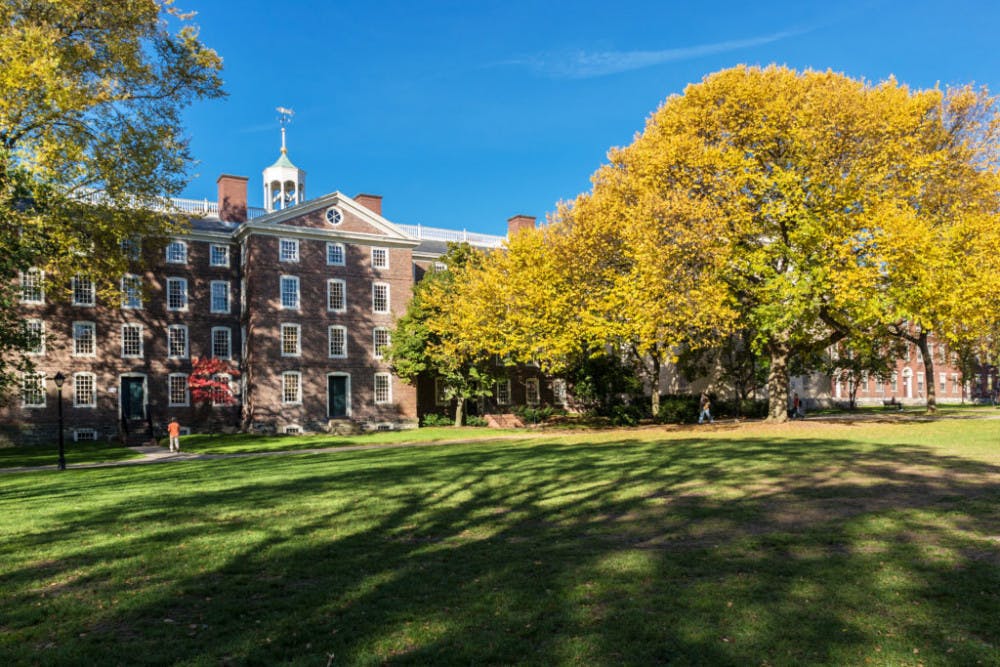This story was updated at 10:35p.m. on April 1, 2018.
The University accepted 1,742 students to the class of 2022 through regular decision Wednesday, said Dean of Admission Logan Powell.
The overall acceptance rate for the class of 2022 was 7.2 percent, the lowest in the University’s history, while the regular decision acceptance rate was 5.5 percent, according to Powell. Students were admitted from a record-high pool of 35,438 students, an 8 percent increase from last year’s applicant pool, which marks the largest year-to-year increase in over five years, he added.
“There were just so many incredibly qualified students in the applicant pool,” Powell said. “We could probably admit three classes of students who are enormously academically qualified from the group of applicants we had.”
Powell said that the Brown Promise initiative, the addition of another A Day on College Hill program and the doubling of travel grants should increase the yield rate of admitted students, which is one reason why the acceptance rate is lower this year.
The incoming class will be the first cohort of students to be admitted under the Brown Promise initiative, which guarantees that incoming and current students will have no packaged loans in financial aid rewards for the 2018-19 academic year, The Herald previously reported. The initiative “should be a strong factor for students to be able to choose to come to Brown,” Powell said. “Where in the past they might have not been able to afford it, this year, because of Brown Promise, we hope they can.”
Sixty-four percent of the pool intends to apply for financial aid — the same percentage as for the class of 2021.
Forty-nine percent of accepted students identify as students of color, an increase from 47 percent last year, Powell said. Additionally, 13 percent of admitted students identify as first-generation students, a slightly lower percentage than last year, Powell said.
The admitted students hail from 48 states and 76 nations, with international citizens making up 11 percent of the pool. The top five represented states were California, New York, Massachusetts, New Jersey and Texas, while the top five represented countries were China, India, the United Kingdom, Canada and Singapore, according to Powell.
Additionally, the University will host two ADOCH programs this year, and early decision students will be invited to attend for the first time in a decade, The Herald reported. The University has doubled the funding available to bring low-income students to campus for ADOCH, Powell said. This year, the University will offer travel grants for 432 admitted students, which will cover the entire cost of transportation to and from campus. Last year, the University offered 189 admitted students that same opportunity, according to Powell.
“We know that when admitted students visit Brown, they are more likely to enroll,” Powell said. “When students come to College Hill and attend classes and meet faculty and current students, they see how special a place Brown is and they’re more likely to matriculate.”
The University also admitted 88 students through Brown’s Program in Liberal Medical Education and 19 students through the Brown-RISD Dual Degree Program, both decreases from last year’s admitted class.
Newly admitted students felt a mix of disbelief and elation when they received their acceptance letters.
“I was so excited when I got in,” said Matthew Rauschebach of St. Louis. “I yelled and I ran up the stairs and gave my dad a big hug.”
“Brown was my first choice, so I opened that (acceptance letter) last, and when it said ‘Congratulations’ I just started crying,” said Ashley Knebel of Palos Verdes, Los Angeles, who was accepted through PLME. Knebel, who is planning to attend the second ADOCH date, is excited for the flexibility of the Open Curriculum.
“I would’ve wanted to study English and pre-med, and that’s hard at a school with a lot of general-ed requirements, but with Brown, it’s really doable,” she said. “I also really want to take classes at RISD because I love photography, but I’ve never had any formal training in it.”
Rauschebach, who will be taking a gap year next year, added that Brown Promise was a factor in his decision to attend the University. He also said that the University paid for his travel, covering his transportation to and from campus.
Students admitted through regular decision will join the 737 students admitted through early decision in December. Of those deferred from early decision, 3.8 percent were admitted through regular decision, a decrease from the 5.4 percent accepted last year, Powell said.





